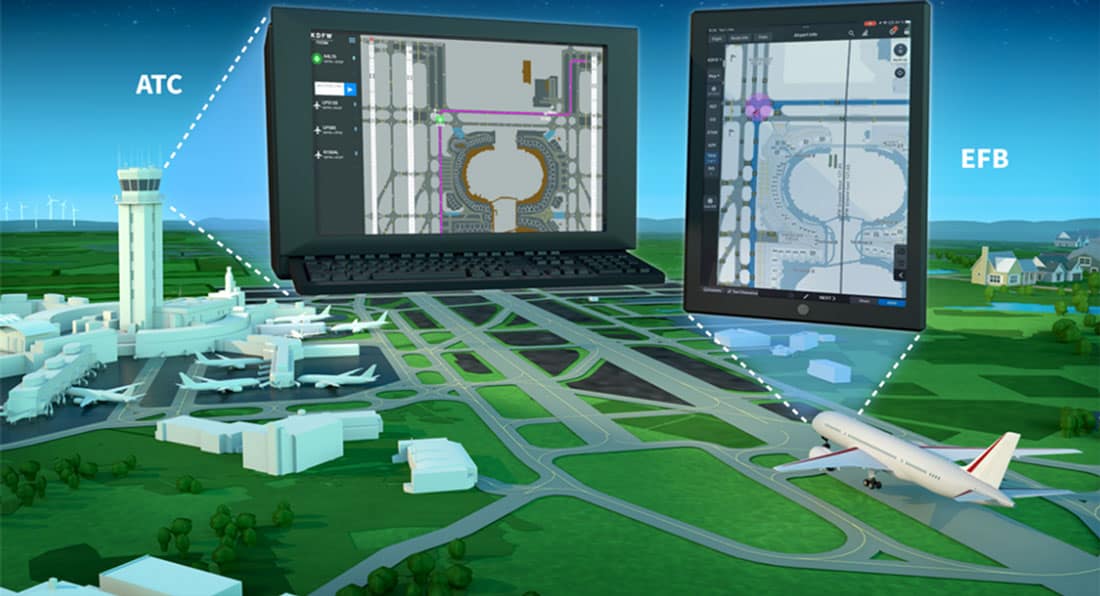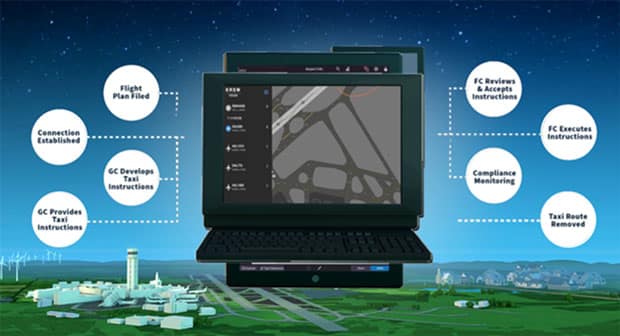Exploring Future Frontiers: Embry-Riddle Aeronautical University Participates in the Flight Deck Collaborative Decision-Making (FD CDM) Proof-of-Concept Demonstration

Embry-Riddle Aeronautical University participated in the Flight Deck Collaborative Decision-Making (FD CDM) Proof-of-Concept (PoC) Demonstration, a Federal Aviation Administration (FAA) project that explores harnessing the cutting-edge Connected Skies/Aircraft Concepts, hardware-agnostic Electronic Flight Bag (EFB) applications and Collaborative Decision-Making (CDM) principles.
The FD CDM project conducted a PoC activity at the Florida NextGen Test Bed (FTB) to demonstrate potential methods to streamline taxi instructions on airport surfaces. By digitizing voice instructions into actionable commands and exploring the concept of Digital Taxi Instructions (DTI), communications and operational outcomes may be optimally enhanced.
The FD CDM PoC Demonstration was attended by project team members that consisted of BCI, Inc., Concepts Beyond, Connectsix, Connor Innovation Engineering, Embry-Riddle, Honeywell, LS Technologies, Embry-Riddle's Next-Generation Applied Research (NEAR) Lab and The Boeing Company. Other team members included Google and NASA. The FAA also had several stakeholders in attendance to witness the progress of the project team. "We were excited to showcase this new capability that delivers comprehensive and verifiable digital taxi instructions,” said Embry-Riddle Florida NextGen Test Program Manager Chris Kokai.
Background
Airport surface operations pose a significant challenge due to complexity and high workloads. Communication relies heavily on voice-over radio, which often involves lengthy and detailed taxi instructions. This can be particularly problematic for pilots in low-visibility conditions or at unfamiliar airports. Additionally, inefficiencies in communications can lead to prolonged exchanges and frequency congestion.
Research
This research explores a solution to establish a robust data-sharing environment that facilitates clear communication between controllers and pilots. Air Traffic Controllers (ATC) can select multiple options, such as free text, graphical imaging (they draw a line on the map for the plane to follow), drop-down selections and speech-to-text turn-by-turn directions that can be displayed on an airport surface map. This information is provided directly to the EFBs. Additionally, compliance monitoring ensures adherence to instructions. In the event of a non-compliance alert, ground controllers and the flight crew are notified immediately. Voice capabilities are still incorporated into the system, and the project concept still issues voice clearances for safety-critical items such as runway crossings.

Student Involvement
Embry-Riddle student Carly Bosma was very involved with the PoC project and demonstration. Throughout her time on the FD CDM project, Carly has played a key role in supporting both technical and programmatic initiatives. She served as the project historian and was responsible for documenting weekly meetings, test sessions, team tag-ups and milestone events. Additionally, she actively engaged in tasks spanning programming, Excel management, deliverable reviews and research to contribute to the project's success. "The highlight of my experience on the FD CDM project was the opportunity to deepen my understanding of air traffic flight operations within a collaborative and intellectually stimulating environment, surrounded by peers and mentors who shared their expertise. I'm truly grateful for the learning opportunity and proud to have contributed to such an impactful and dynamic project,” Bosma said.
Conclusion
Embry-Riddle was excited to collaborate with the FAA to elevate air traffic and ground operations through enhanced interconnectivity and data exchanges between FAA systems and electronic flight bag mobile application services. The demonstration emphasized optimizing air traffic flight operations and, as always, keeping safety paramount. In particular, the demonstration illustrated improving the functionality and usability of prototype applications, enhancing the digital taxi instruction delivery concept, and exploring Google’s Speech-to-text DTI capability, underscoring enhanced air traffic management. FTB Director of Advanced Programs Kirsten Kasper said, “This is our first major event of the year, and we look forward to executing more demonstrations to advance air traffic management technologies.”
About the Florida Test Bed (FTB)
The FTB is an agile research, prototyping and integration facility designed to allow government, industry and academia to showcase their ideas and technologies in the National Airspace System (NAS) environment. For more information, please visit the Florida Test Bed website.
